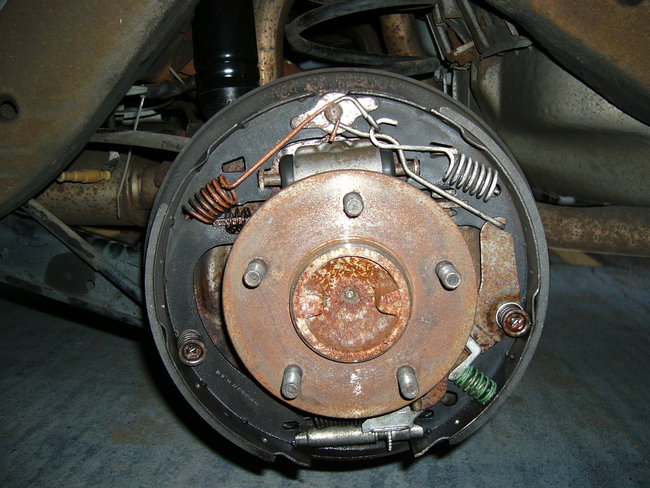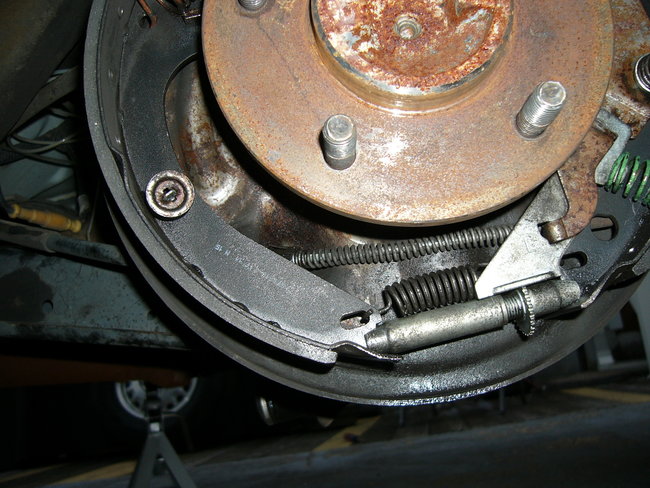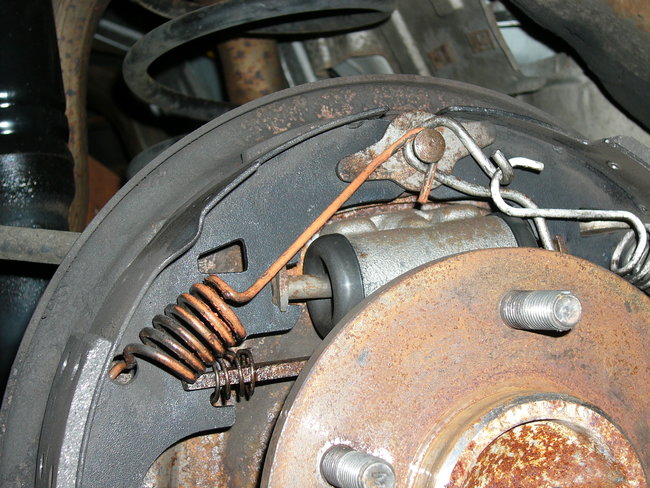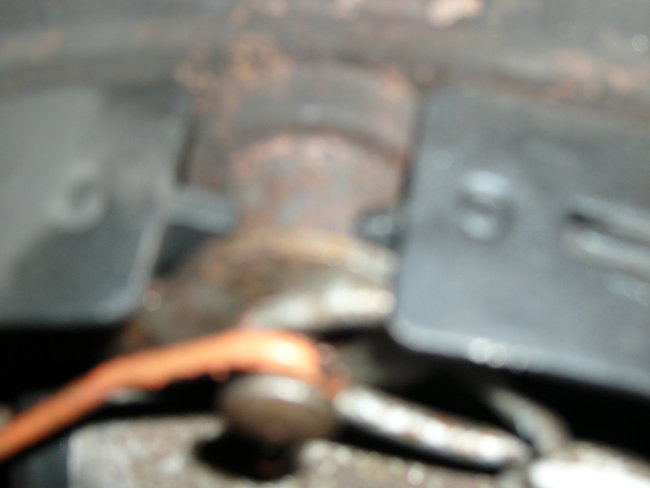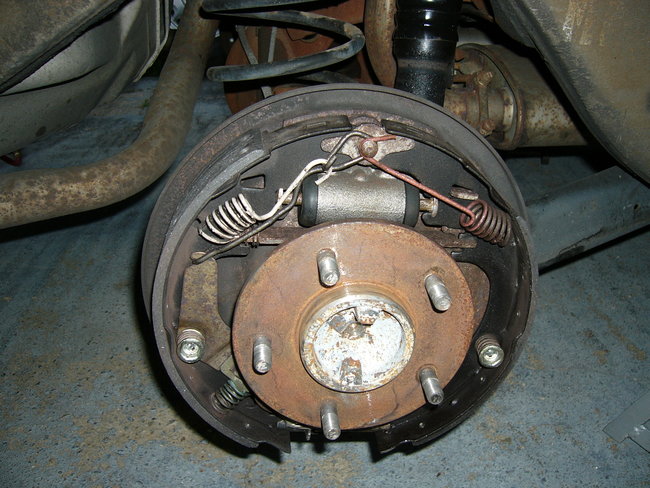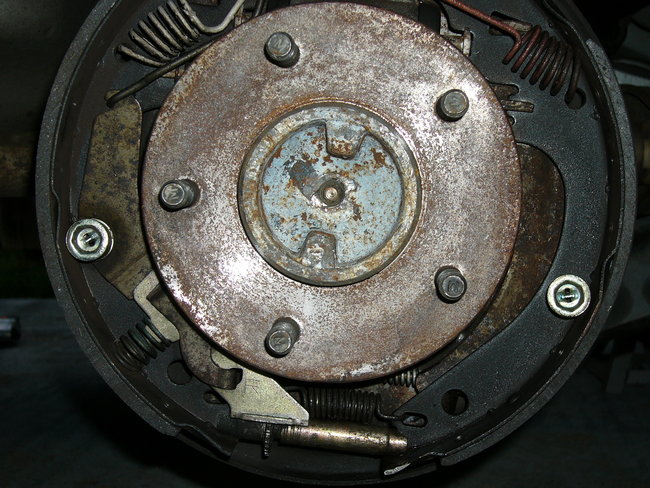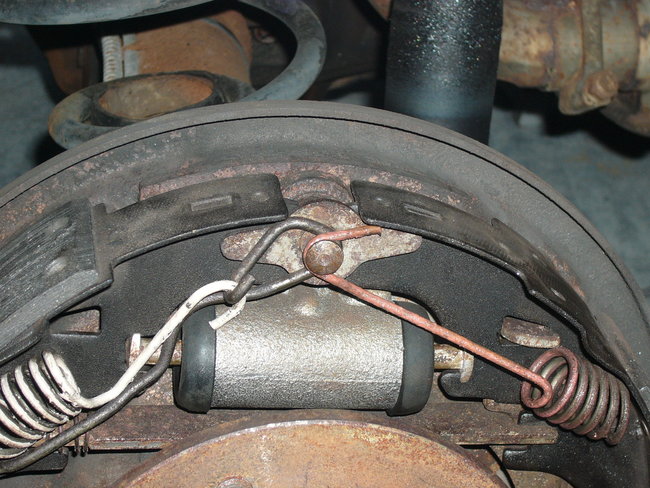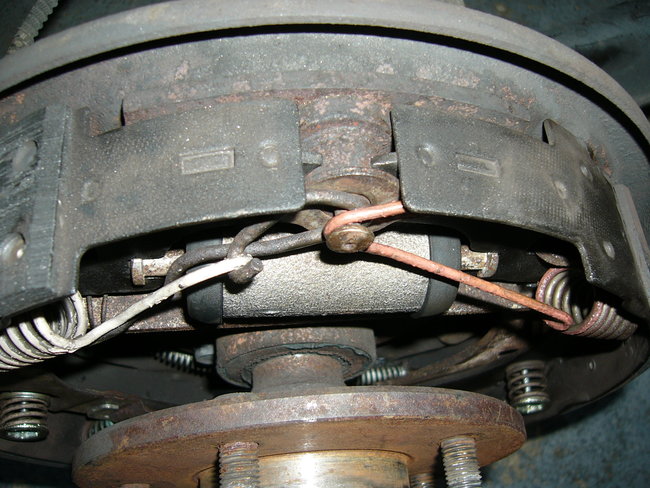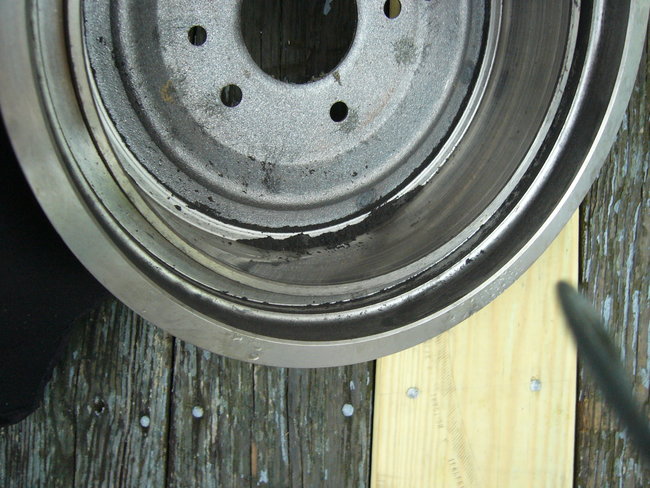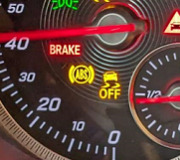There are a few things to look at. The most likely suspect is a rear parking brake cable that is rusted in the partially-applied position. Remove the drum, then look at the two shoes where they hit the large anchor pin at the top. If the parking brake cable is not fully released, one of the shoes may not be hitting that pin. Even if both of them are resting on the anchor, look at the parking brake strut bar between the middle of the two shoes. You should be able to push that forward 1/8" against the anti-rattle spring pressure, with your thumb. If there is no free play, the parking brake is partially applied. That will hold the front shoe out and make it grab the drum very aggressively under light brake pedal pressure.
Compare the length of the linings on the front and rear shoes on each rear wheel. The front one, (toward the front of the car), must be shorter than the the rear lining. If they are reversed, that can also cause that brake to apply harder than it is supposed to. The shorter front lining is only supposed to try to grab the drum and rotate with it. Doing so pushes on the lower link, the adjuster in this case, which pushes on the bottom of the rear shoe to apply it. The rear piston in the wheel cylinder pushes on the top of the rear shoe. This is called a "duo-servo" brake because two forces are acting on the rear shoe. The rear one is longer because it is the one that does most of the stopping.
Rear gear lube leaking onto the rear shoes will make the shoes grab real hard. Once they have been hot from normal braking, there is no way to get that grease out. The shoes and drum have to be replaced. Both are porous, and that grease will soak into the cast iron drum, then leach out later to recontaminate the new shoes.
Same goes for axle / bearing grease. There cannot be any contamination on the friction surfaces. If there is, it can be washed off with brake parts cleaner as long as the parts have not gone through their first heat cycle yet. Professionals even wash their hands first with soap and water to prevent getting fingerprint grease on brake parts.
A drum brake can apply too hard if the drum was not machined or replaced. No two linings ever ride in exactly the same place, so the new one could hit a rust ridge on either side of the drum's friction surface.
There are six "lands", or raised spots, on the backing plate that the shoes slide on. Those must be lubricated with a special high-temperature brake grease. GM has a design issue with their shoes where just a thin edge of the frames slide on the backing plate. That promotes the formation of grooves in those lands. Those can cause a shoe to stick and not apply under light pedal pressure, and it can cause a shoe to not release right away. Other manufacturers have bent-over tabs on their shoes to distribute the wear. The grease is still used to prevent an annoying squeak when the shoes retract. On GM vehicles it is also important to reduce the formation of those grooves.
As long as we are discussing brake jobs, if an old drum is machined, look at the hub it mounts on and you will see at least one access hole, and sometimes three. Water can get through those holes and form a circle of rust on the inside of the drum's mounting face. Those must be scraped off before a drum is machined so it sits squarely on the brake lathe, to prevent machining a warp into it. When a used drum isn't machined, if it is reinstalled in a different orientation, those rust spots will be trapped between the hub and drum and prevent the drum from sitting squarely. You may feel that as a vibration when braking.
Be aware too that a real lot of research goes into making the brake system balanced front-to-rear. Any time a friction part is replaced or machined, the linings will not make one hundred percent contact until they have as much as one hundred miles of use. Until then, you have to apply harder pressure to the brake pedal to stop the car, and that will cause the linings to get hotter than normal, leading to one type of brake fade. Once they cool down they will be fine, but you can have one brake working more effectively than the rest making it appear to be locking up. That problem would have started after you replaced parts, not before.
Tuesday, July 26th, 2016 AT 10:36 PM
